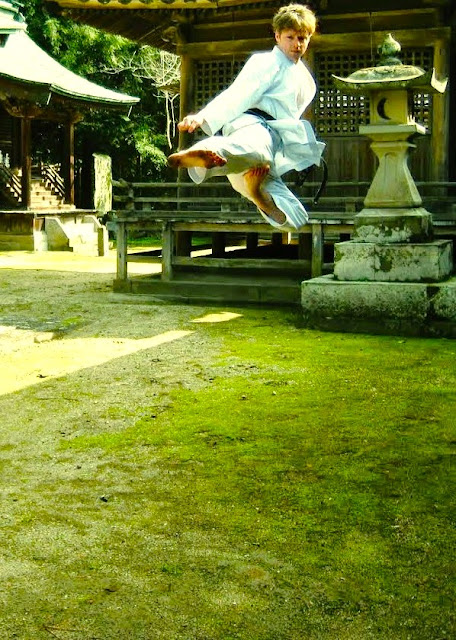基本稽古 (Kihongeiko — Foundational Training) must change not only as one ages, but as they advance in technical skill. It is critical to note here that this doesn’t mean ‘kihon practice’ becomes a predominantly cerebral activity—this can never be the case (regular physical karate training is utterly imperative); however, one must certainly train smarter as their journey progresses.
What I mean by this, is for two primary purposes:
(1) You KEEP
IMPROVING in karate skill.
(2) You AVOID INJURY and avoid aggravating existing injuries—as much as possible.
Both of these result in LONGEVITY in karate. The first
provides purpose, satisfaction and motivation from ADVANCEMENT/SET GOAL ACHIEVEMENTS. The second
requires adaptability, innovation and self-awareness for HEALTH.
Quality repetitions of the kihonwaza is a critical point. To
be honest, high repetitions are something I only require of myself (and those
who request such practice). This is because I can’t ‘listen' to other people's bodies.
My maxim as an instructor is that “pushing really hard must be guided by each
individual”.
To be frank, repetitions are only positive if they are
‘quality reps'. If increased speed and power is the aim, impact training,
calisthenics and resistance training are 'time better spent' for more experienced
karateka.
What I’m trying to emphasize here is that both その場基本 (Sonoba Kihon—Stationary fundamentals) and 移動基本 (Sonoba Kihon—Fundamentals on the move) should “…be quality training, more than quantity”. It is absolutely obvious that ‘high repetitions of incorrect form is counterproductive for one’s skill’ and, quite potentially, one’s health. That being said, if one’s skill is sufficient (and health permits) pushing oneself to the limit is good training and motivational. But, again, this depends on each individual’s self-health evaluation on any given day. Everyone must weigh-up the pros and cons in relation to what they wish to achieve, and the danger factor(s).
Ironically, in the pre-competition era of karate, the
training was more specific to each individual. This is something I returned to
doing over ten years ago with trainees. And the result has
been far more awesome than I expected! Following this way, karateka really maximize their time in
their karate practice and optimize their technical skill. Quite simply, this is
because: "training in this way is harmonious with their daily individual physical condition/health." This applies not
only to the very young karateka, and the older practitioners, but also with
world-level karate athletes in their prime. And IKS has had success, in all of these cases.
This is the 空手道
(Karate-Do) I advocate as a professional instructor, and it’s a universal way
which: (a) allows each individual to safely maximize their personal skill
developments—‘kihon, kata and kumite’—irrespective of where they are ‘now’ on
their respective journey; (b) optimizes health through their practice; and (c) results in really enjoying training in the art—as it truly becomes ‘their karate’.
アンドレ バーテル

No comments:
Post a Comment